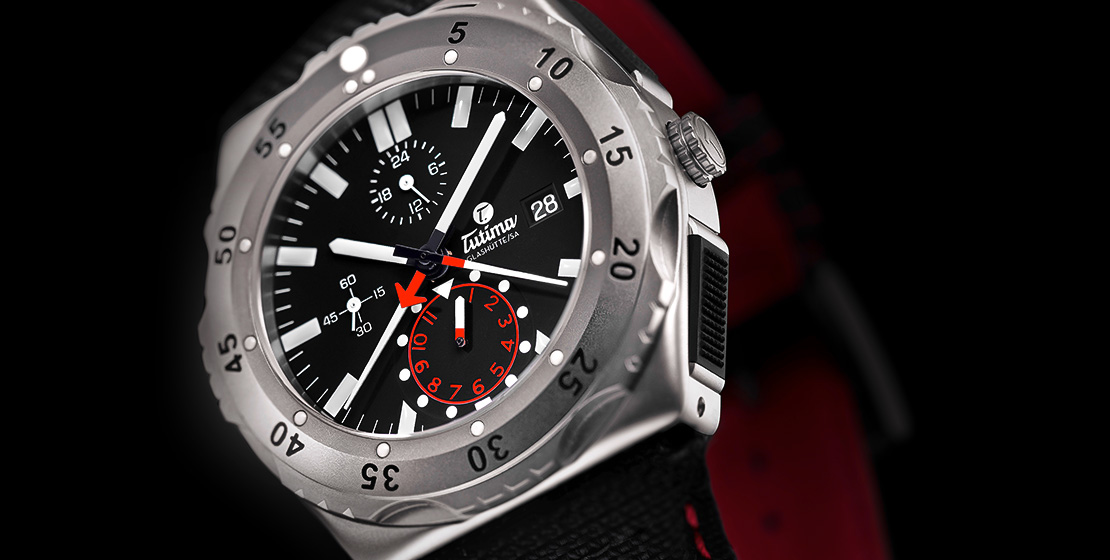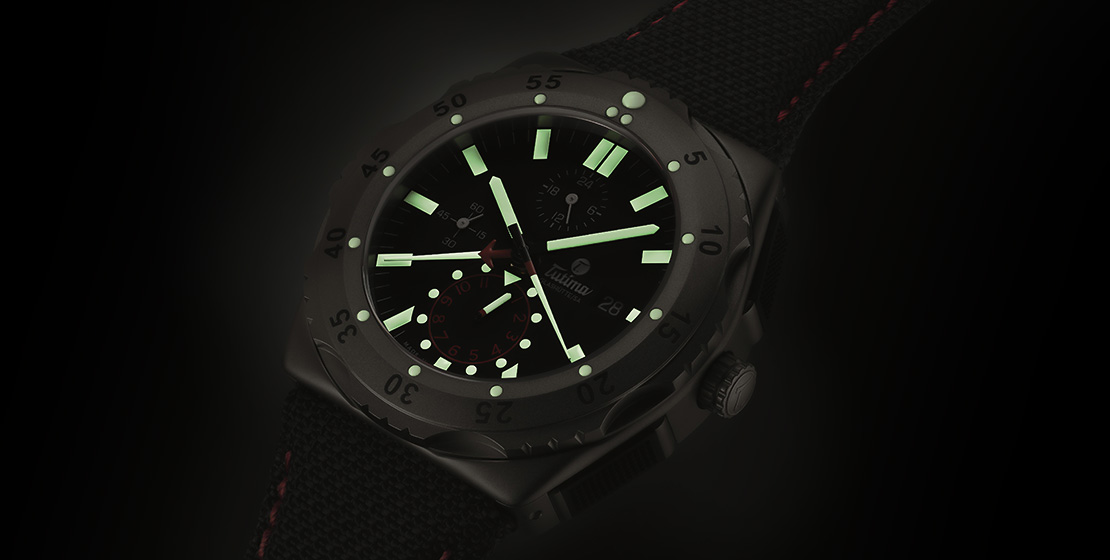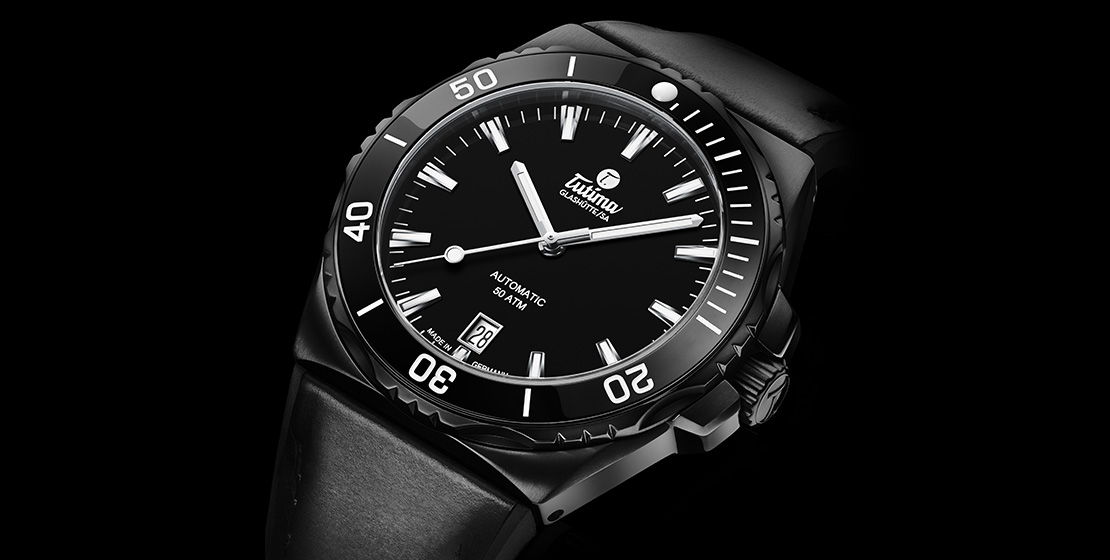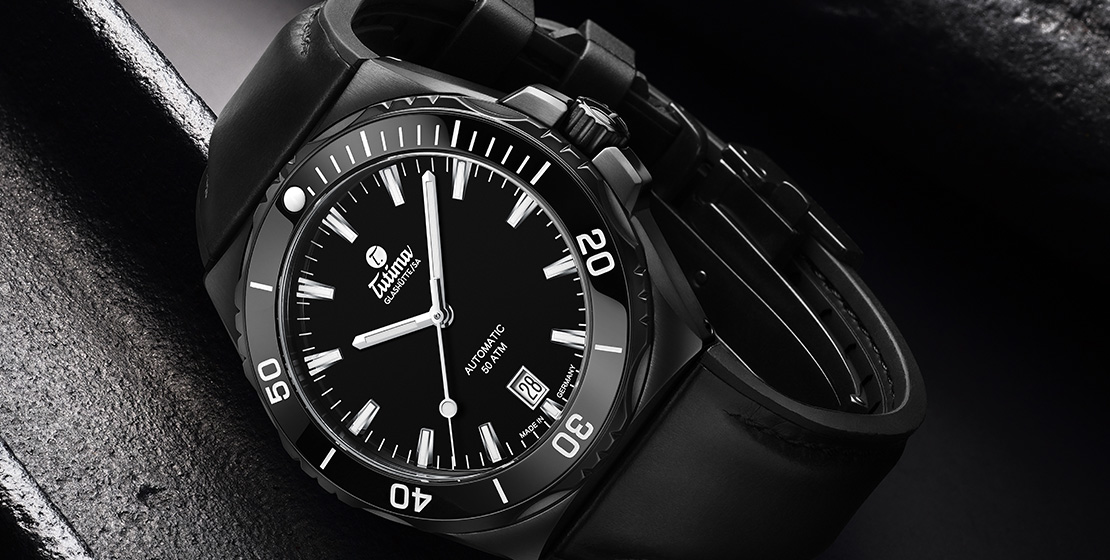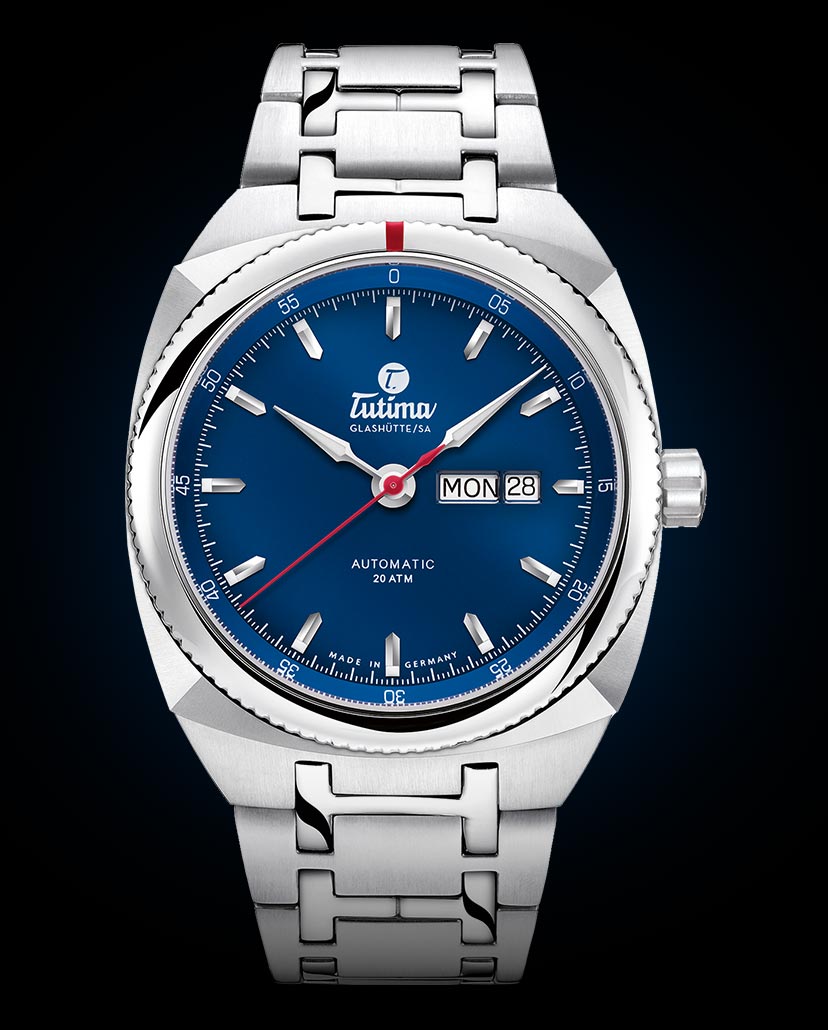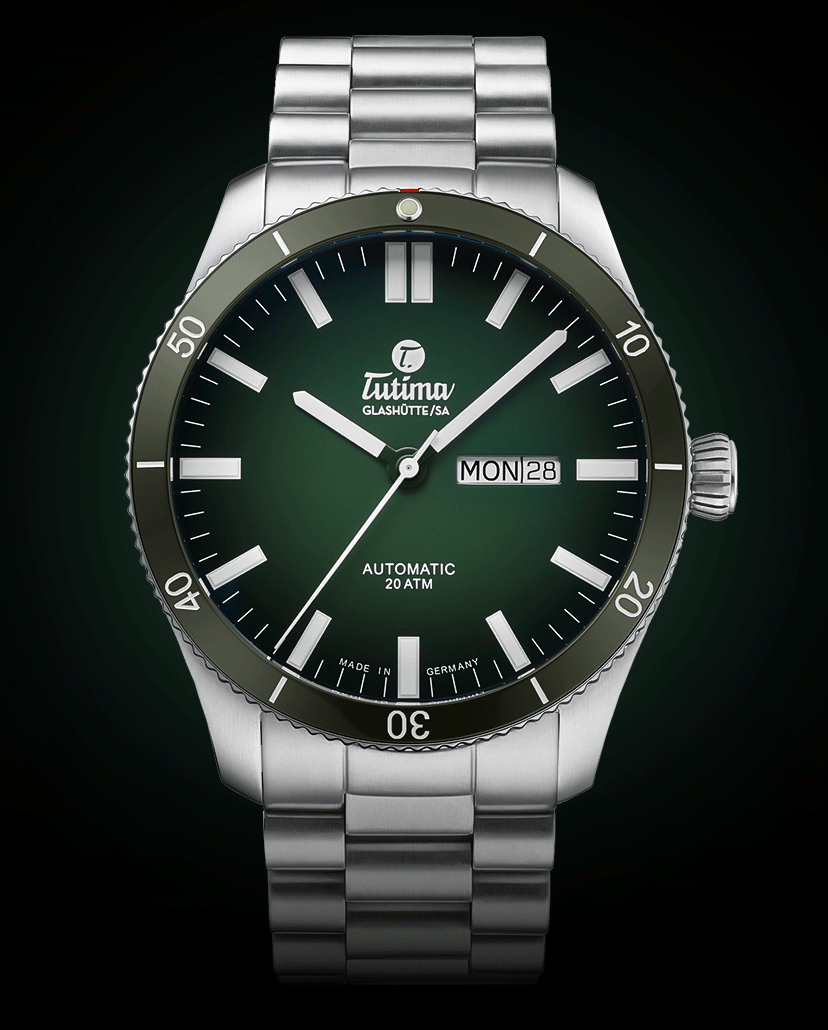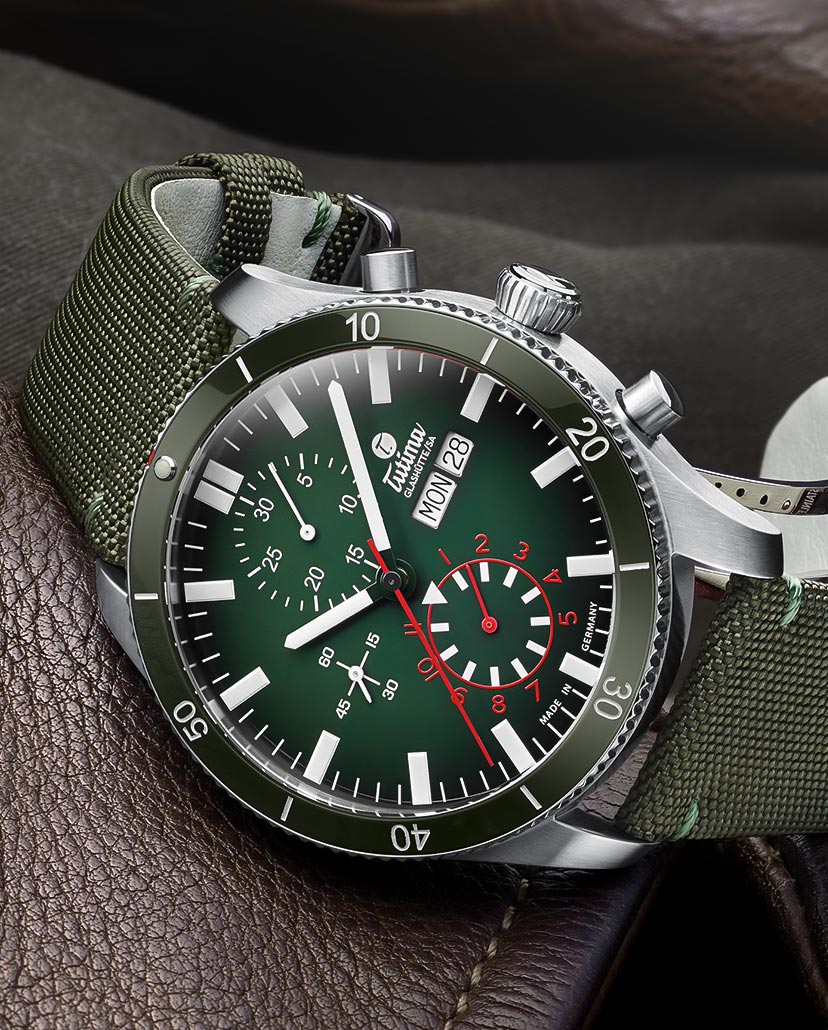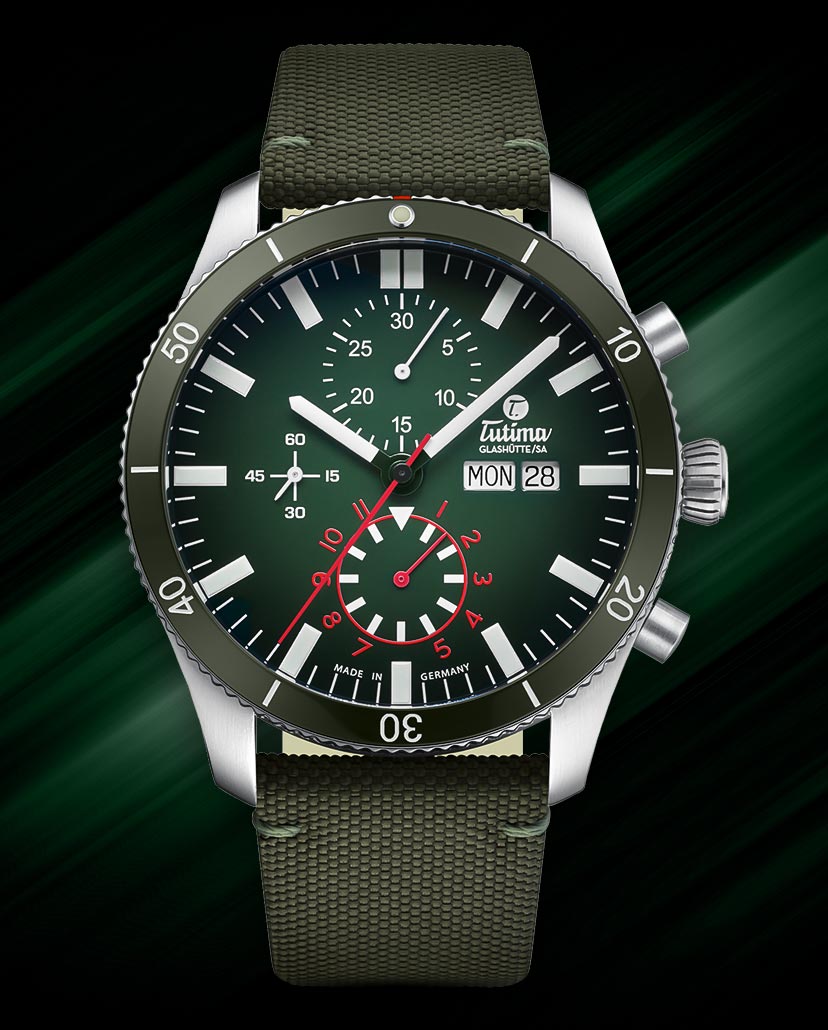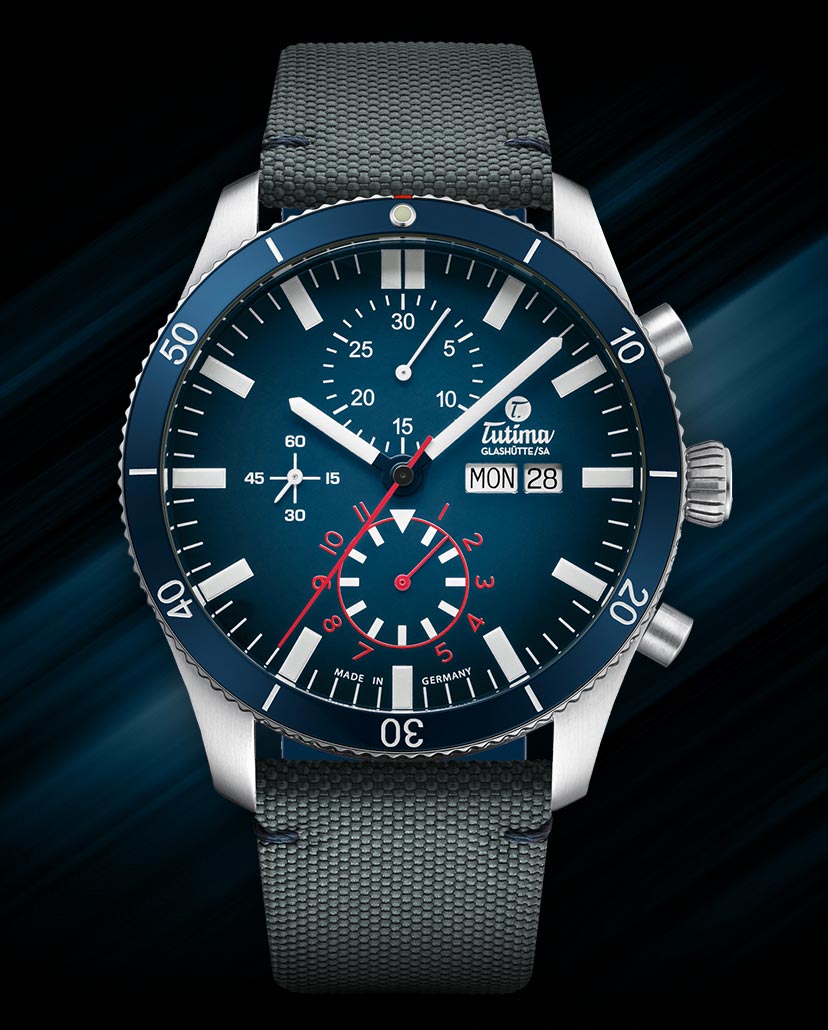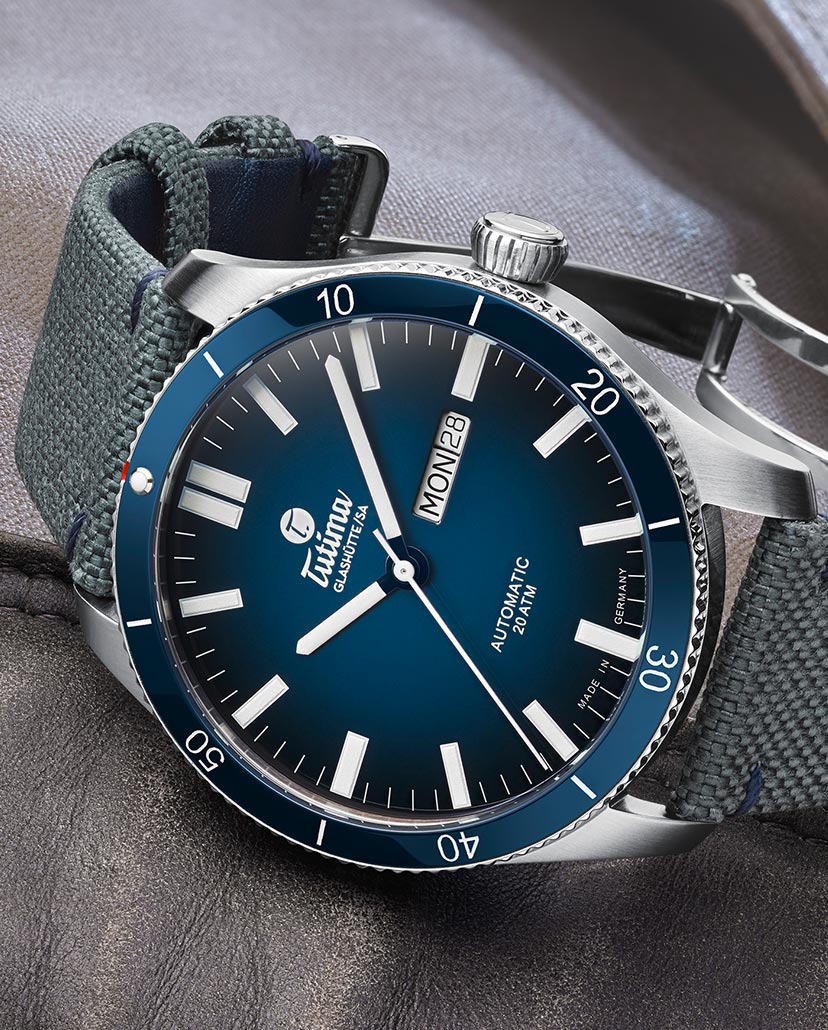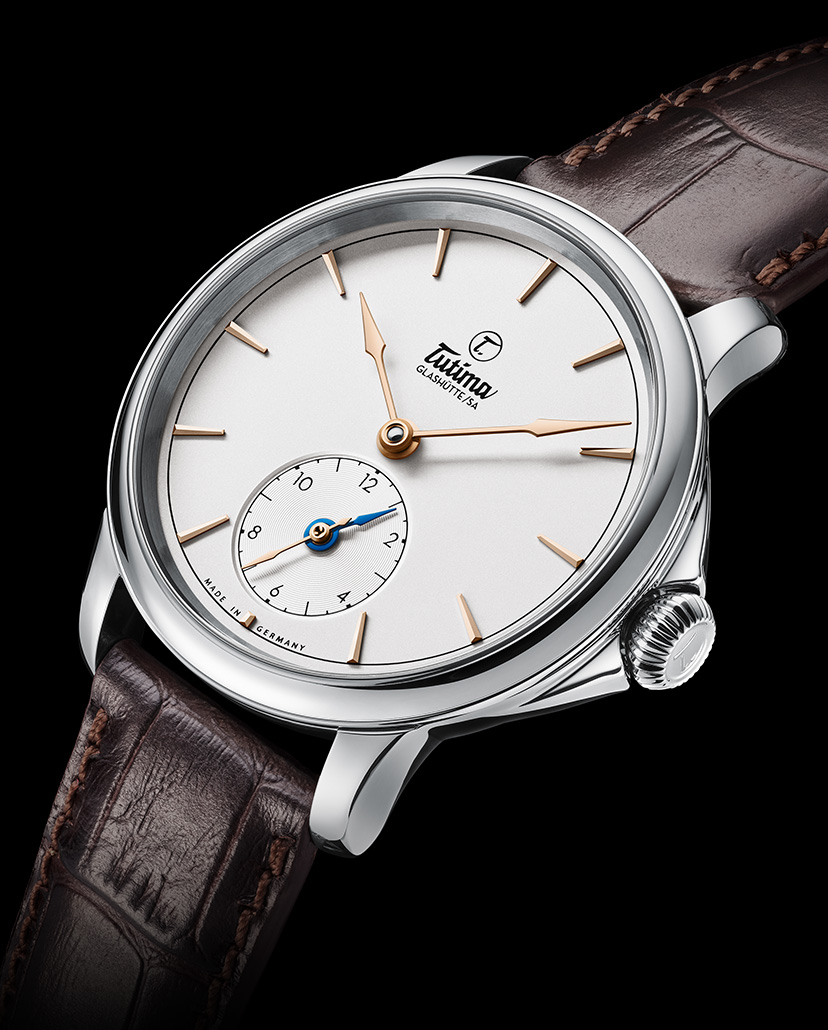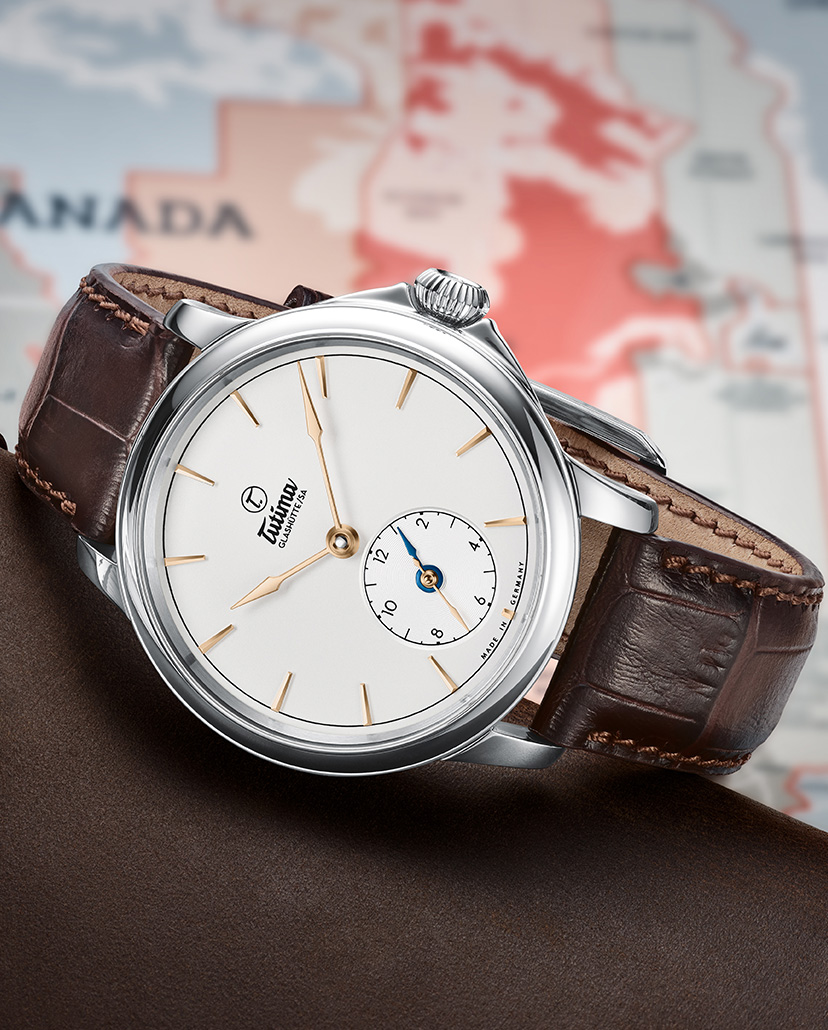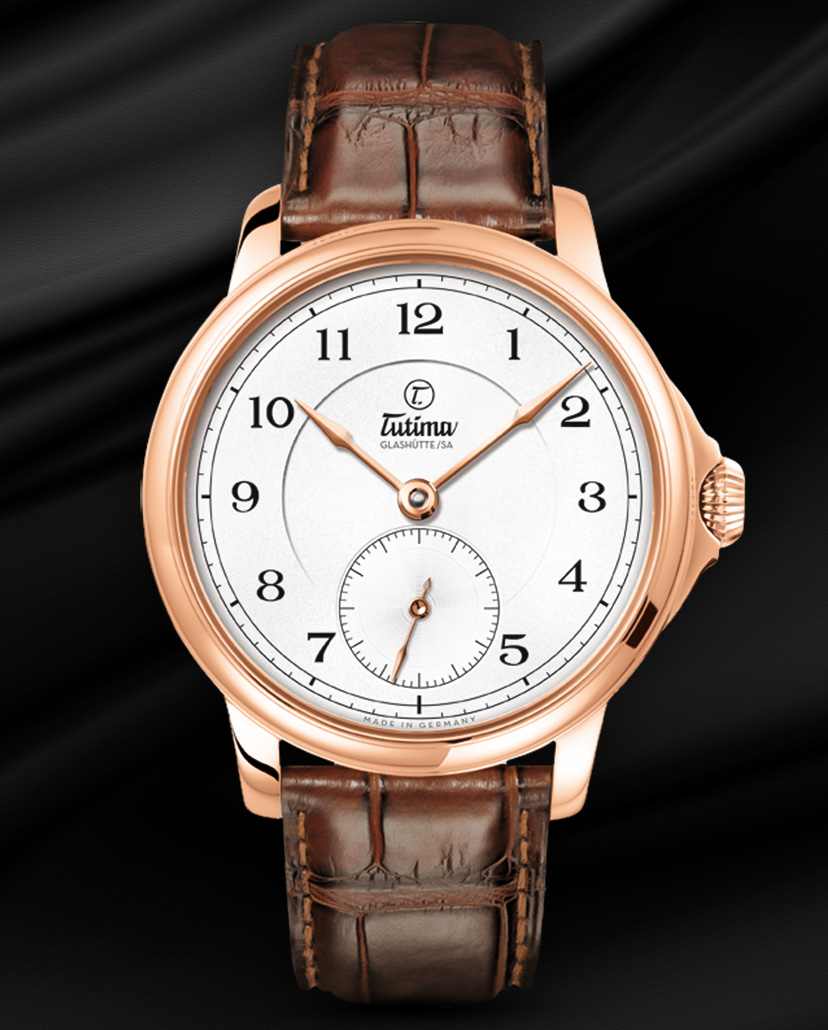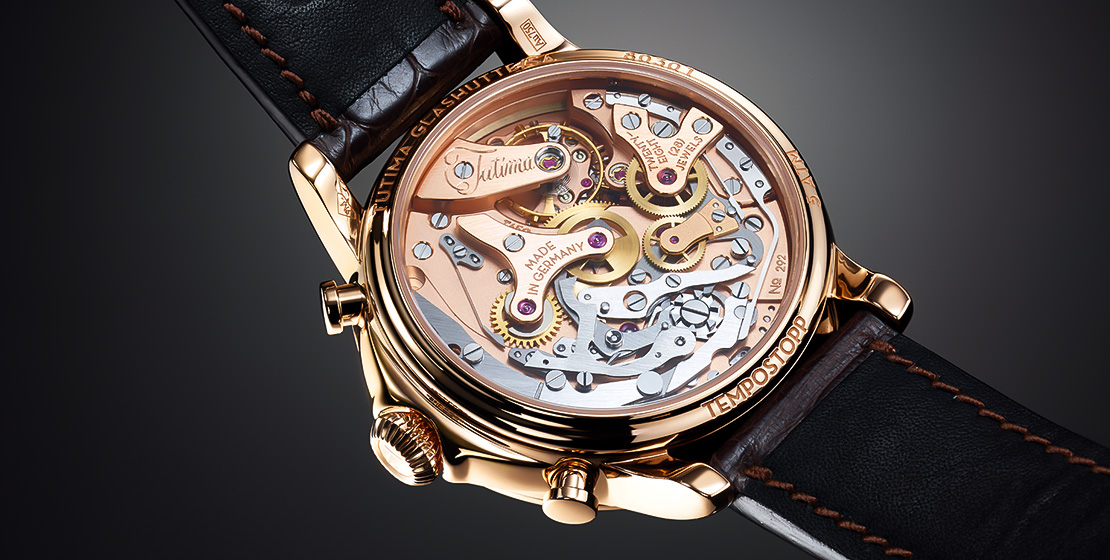ReviewPiloting Uncharted Airspace: Presenting Timepieces By Tutima Glashütte
From their official German Reich air force pilot’s watches in the 1940s to their NATO chronograph in 1984, Glashütte-based watchmaker Tutima are known for their pilot’s watches. But Tutima are more than just their pilot’s watch, and they have a 90-year-old history to prove it
May We Recommend
In the 90-something years since Glashütte-based watchmaker Tutima have been around, their robust timepieces and distinctive design language have inspired a small yet dedicated following. From official German Reich air force pilot’s watches in the 1940s, to those built for the German Air Force, and subsequently the NATO chronograph in the 1980s, Tutima are known for their pilot’s watches. They helped put Glashütte on the watchmaking map by creating the first German flyback chronograph, and pride in their German roots shines through in their Patria collection. If their history is anything to go by, Tutima have the determination to do things right, no matter how long it takes. For this alone, the brand commands respect.
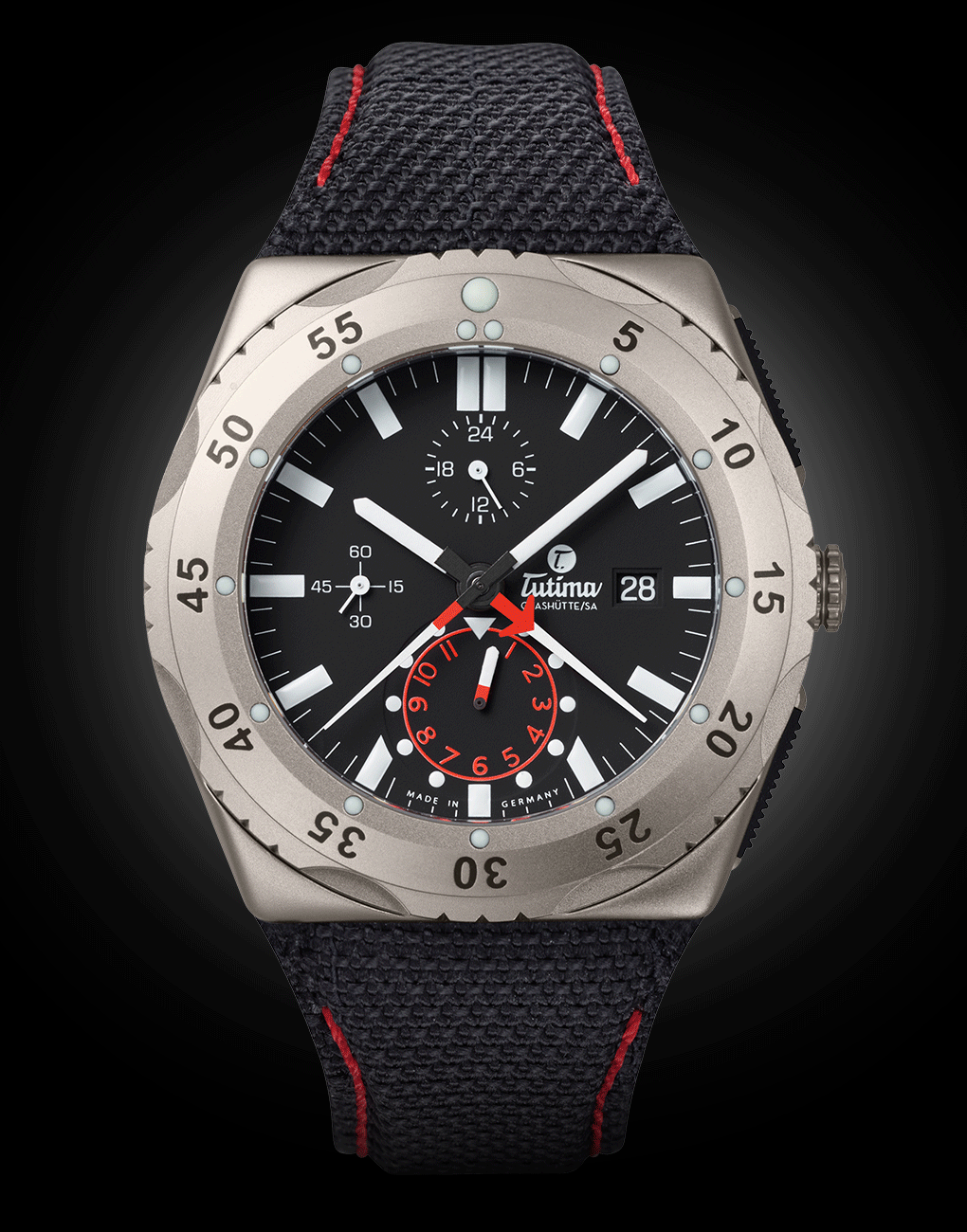
Tutima Glashütte: World War II Survivors
In 1927, when pocket watches were still widely used, jurist and entrepreneur Dr Ernst Kurtz set up two companies Uhren-Rohwerke-Fabrik Glashütte AG (UROFA) and Uhrenfabrik Glashütte AG (UFAG)—one built watch components and the other produced assembled wristwatches. The watches that came out of these factories were especially reliable and durable, and were christened ‘Tutima’, which is Latin for ‘safe, secure’. That’s how the brand came to be.
Tutima is not the first brand that comes to mind when thinking of German—more specifically, Glashütte—watchmaking brands. The reason the brand aren’t as well-known as their more successful geographical neighbours is because, at the end of World War II, the facilities that survived the final bombing of Glashütte were taken over by the Soviet Union. UROFA and UFAG were among these, but Dr Kurtz managed to relocate to Ganderkesee in West Germany, where, along with other employees from the companies, he managed to restart making reliable watches. In 1960, the brand was taken over by Dieter Delecate, a close aide of Kurtz’s, and have since remained within the Delecate family.
In 1989, after the reunification of Germany, other watchmaking brands easily resettled into Glashütte, but for Tutima, the move from Ganderkesee was not as easy, as it would entail abandoning their set up, and moving back to Glashütte. It took careful planning and until May 2008 to re-establish their factory in Glashütte, and finally move back to where they started from. The brand have survived wars, the quartz crisis, history and geography, and have proved themselves time and again.
The M2: ‘Uncompromising Functionality’
Tutima’s M2 line of watches is based on their NATO chronograph from 1984. It also happens to be the ‘official service watch of the German army’s pilots’. The M2 timepieces have large 46mm pearl-blasted titanium cases that are pressure- and shock-resistant. The integrated pushers on either side of the crown have grooved neoprene inlays. The movement is Tutima’s in-house calibre 521, and is cased in a nickel-iron alloy that binds magnetic field streams, ensuring that the movement remains unaffected by magnetism. With thick rectangular-shaped indexes and baton-shaped timekeeping and chronograph hands filled with Super-LumiNova, legibility—even in dim light conditions—remains clear in the M2 series.
On paper, Tutima timepieces are on the larger size, but on the wrist, they wear much smaller and fit even narrower wrists quite comfortably. This is because of ergonomically-designed, small, almost hidden lugs attached to the tonneau-shaped case of the M2 collection. The decision to craft the case and the H-shaped bracelet in titanium also makes the watch lighter than it looks.
The M2 Seven Seas collection is set in an extraordinarily robust case in 44mm titanium. Slightly tonneau-shaped, the case houses the self-winding calibre T330. As the name suggests, this timepiece was built for water sports, and has an exceptional water resistance of 500m, while the unidirectional rotating bezel has grooves that are easy to grasp. Available in dial colours of velvet black, yellow, blue and signal orange, the timepieces come mounted on a titanium bracelet or a Kevlar strap with surface and seam stitches matching the dial colours. A sportier version of the collection is the M2 Seven Seas S, at 43mm in brushed and polished steel, and available in beautiful ‘dégradé’ dial colours, is water-resistant to 500m. The Seven Seas S is powered by the automatic calibre Tutima 330.
The three-handed M2 Coastline series has a case made from titanium and has no corners or edges, and features the M2’s integrated pushers on its chronographs. These M2 Coastline timepieces are water resistant to 300m.
Saxon One: Sharp, Sporty, Edgy, Elegant
The Saxon One timepiece has sharp lines on its tonneau-shaped, 43mm case, offset by a three-dimensional, pyramid-shaped bezel marked with a deep red rectangle at 12 o’clock.

The stainless steel bracelet has alternating satin-finished and polished surfaces that match the dual finishing of the case. The dial has applied indexes and sword-shaped hands, and displays the date and day of the week at three o’clock. The movement within is Tutima’s self-winding calibre 521, and is visible through the sapphire crystal on the screw-down caseback. The watch offers a power reserve of 44 hours, and is water-resistant to 200m.
Grand Flieger: Replica Of The 1940s Pilot’s Chronograph
Tutima’s first pilot’s chronograph from 1941 was powered by their calibre UROFA 59, equipped with a flyback function. However, this calibre was lost in the dismantling of UROFA’s facilities in 1945. The Tutima Grand Flieger (‘pilot’ in German) is a re-edition of the brand’s first milestone, and was first released in 1994 to mark Dr Kurtz’s 95th birthday. Almost an exact replica of the original, the 43mm Grand Flieger features a fluted bezel with a red reference marker, clean, crisp Arabic numerals on the dial, and luminous hands. Unlike its 1941 predecessor, this version is powered by a modern movement that is visible through the exhibition caseback.
The Grand Flieger Airport series, while also based on original, features a bidirectional rotatable bezel made from scratch-resistant ceramic, and bold rectangular indexes instead of Arabic numerals on the dégradé dial. The three-handed timepiece is powered by Tutima’s self-winding calibre 330, while the chronograph version of the Airport series is powered by calibre 310, which features a 12-hour, 60-second and 30-minute counters, as well as the date and day of the week at three o’clock. The timepieces are mounted on a stainless steel strap or a fabric wristband.
The Grand Flieger Automatic series is the brand’s entry level watch, with both Arabic numerals as well as applied indexes on the dégradé dials, and three-handed timekeeping.
Tutima Sky: Dressy Watches With Gorgeous Dials
The Sky line is Tutima’s tribute to the 70s, with their dark dégradé dials, polished 41mm stainless steel cases and fine Milanese bracelets. The exhibition casebacks offer a glimpse of the Tutima calibre 330, featuring a rotor with the brand’s characteristic 18-karat gold seal.
Patria And Tempostopp: Proudly Glashütte
Glashütte watchmaking is characterised by its minimalism, and this is evident most clearly in Tutima’s Patria collection. The 43mm round, steel case has a rounded, polished bezel and rounded lugs that help the watch fit snugly on just about any wrist. A fluted onion crown is protected by guards and bears the brand’s logo on its flattened end.
The deceptive simplicity of the dauphine indexes, small seconds in a sub dial at six o’clock and hand-finished timekeeping hands mask the Glashütte movement within—Tutima’s calibre 617 has traditional engravings and contains a Breguet hairspring with a special terminal curve. The sapphire crystal caseback graciously offers a view of the open-worked balance cock and the Glashütte three-quarter plate. Mounted on a beautiful alligator leather strap, this collection is a fine example of Glashütte minimalism.
Tutima celebrated 90 years with the introduction of the calibre T659, a movement entirely developed by the Glashütte brand, and reminiscent of the calibre 59, which powered the 1941 Fliegerchronograph. This was the first German chronograph with a flyback (‘tempostopp’ in German) function. The calibre T659 now powers the brand’s tribute to the first chronograph with the tempostopp function—the Tutima Tempostopp—in a 43mm rose gold case.
With this diverse collection of watches in their repertoire, Tutima have held their own as prestigious Glashütte watchmakers. Their commitment to making reliable and secure timepieces has been reinforced over and over in the 96 years since their inception, and their slow—yet steady—progress over the years is, in itself, proof of their dedication to fine watchmaking, and to their fatherland.





